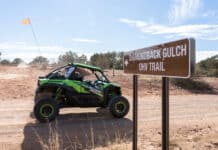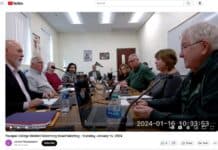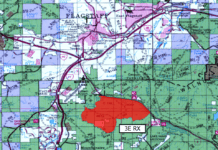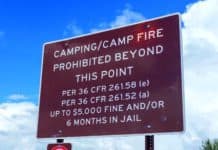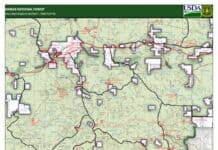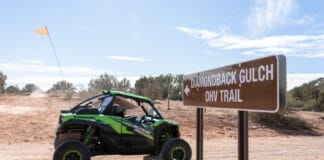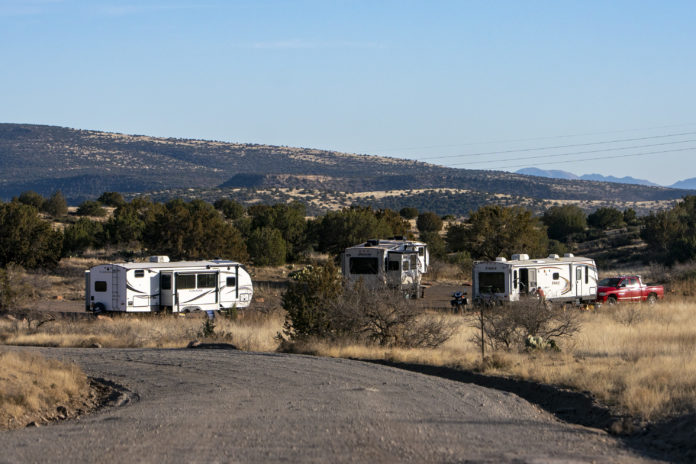
The Red Rock Ranger District is cracking down on camping on the Coconino National Forest.
“We recently started using a new app, which is an amazing improvement,” Red Rock District Ranger Amy Tinderholt said.
The app is available for all staff in the Red Rock Ranger District. It collects data on the license plates and campers who stay in the forest for more than the 14- day stay limit.
According to Tinderholt, in the past, rangers in the district used a whiteboard and note system for keeping track of overstaying campers or potential problem areas in the forest. This new database from the app allows rangers to easily pull up the database to assess if they need to ask a camper to vacate the forest. After staying in the forest for 14-days, campers cannot return until 16 days later.
Red Rock Ranger District’s Recreation Program Manager Chris Johansen presented on the dispersed camping discussion at the Sedona Chamber of Commerce and Tourism Bureau’s Community Pulse last week.
“We’re doing an emergency area closure. As everybody has probably seen driving down 89A, high use has expanded the camping footprint in areas that have never been seen before,” Johansen said. “Recreation is at an all-time high on public lands, and we are feeling that in the greater Sedona area.”
The USFS will set up emergency closures for camping and fire-starting around and along Forest Roads 525 and 89B. Beginning in late March or early April, there will be only eight designated camping sites in the forest with around 200 spots total.
The rest of the forest will be completely closed off to public camping. This will be on a first-come-first-serve basis, with no services at the campsite.
“What our goal is to protect wildlife, to protect our natural resources, enhance law enforcement, reduce fire hazards and provide better camping opportunities,” Johansen said.
Campers like Anna Jenkins and Tyler, who wished to keep his last name anonymous, have been using forest land as their primary housing since they both moved to work in the Sedona area.
“In my situation, it’s an issue because I work in the Village of Oak Creek, and being able to park in the forest is convenient for my commute to work,” Jenkins said. “We don’t trash the place or leave anything. We usually just come in and park for the night and then do our daily activities the next day.”
Jenkins has been working at an Inn for the past few months and is dependent on a place to park the van.
Tyler also is dependent on public camping as he has been living out of his van for around three years. Tyler has parked and worked in Oregon, California, Arizona and Colorado over the years.
“My experience with USFS has been good everywhere in the Western states where I have traveled …. The only time I have had an issue is here in Arizona,” Tyler said. “The ranger here said her partner recorded my plate earlier in the year. And I told her we have not been here the whole time. She then told me I had to leave the forest for 16 days. I had only heard from other rangers that you have to move 28 miles elsewhere, but never to another national forest.”
Many others, including Sedona City Council members, recognize how many workers from Sedona live in the forest for a various number of reasons, to help support Sedona.
“Someone complained, ‘Oh well, what about the people living in the forest?’ They’re living in the forest because they were evicted and they’re all working homeless.” Vice Mayor Scott Jablow said at the last City Council meeting.
But with the 14-day camping limit being established in 1999, USFS says it’s time to start increasing monitoring campers. But with the limited staffing at the forest service, rangers say the app will help take the responsibility off of the USFS officers alone. According to the USFS, dispersed camping sites will continue to be monitored by forest rangers, in partnership with Yavapai County Sheriff’s Office and the Arizona Game and Fish Department.
This program is a part of the forest’s larger assessment of the forest land camping for the next decade, while they collect the funds for established campsites with services.
“Getting long-term camping in place could take two to 10 years depending on the complexity and cost of the sites,” Tinderholt said. “While we are getting long-term solutions in place, we can extend our emergency closure if needed.”



